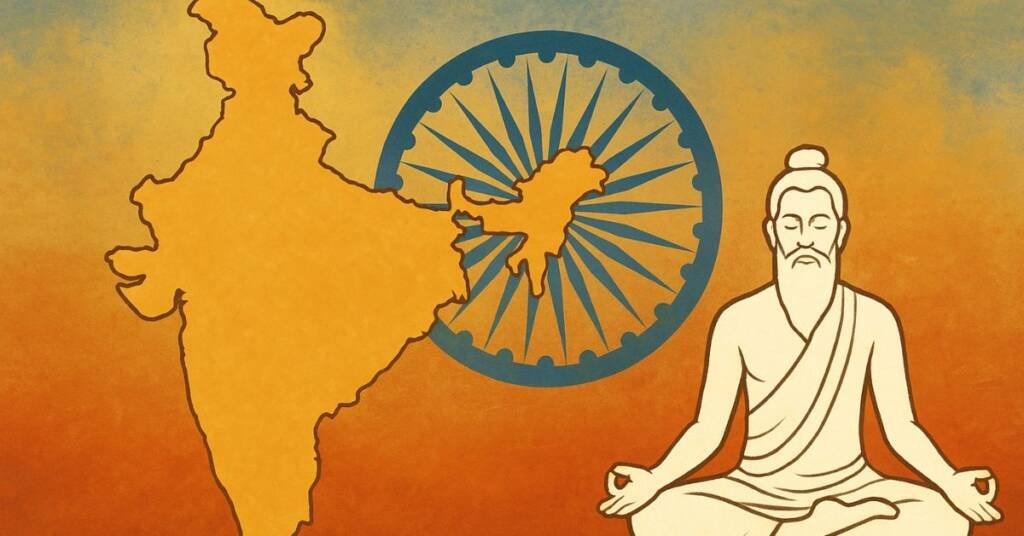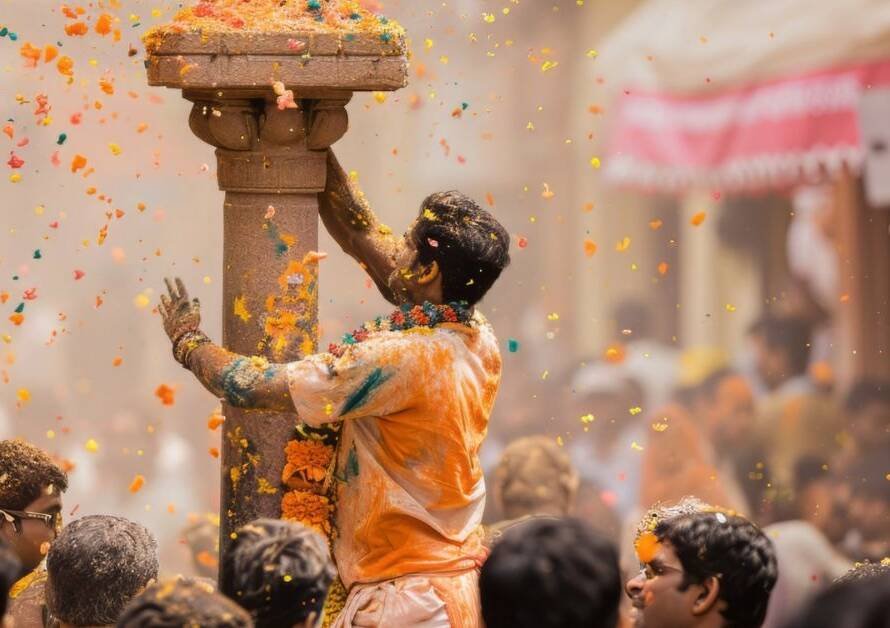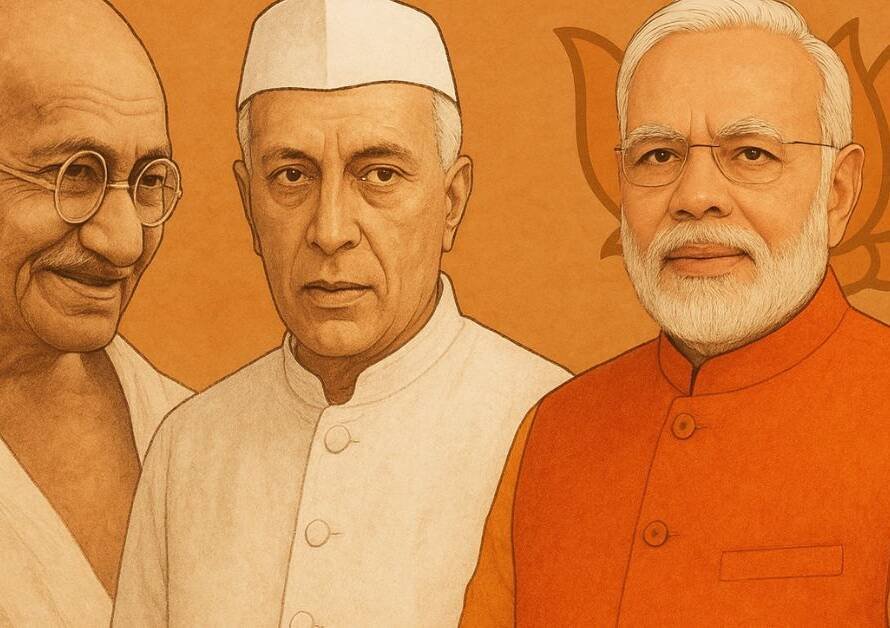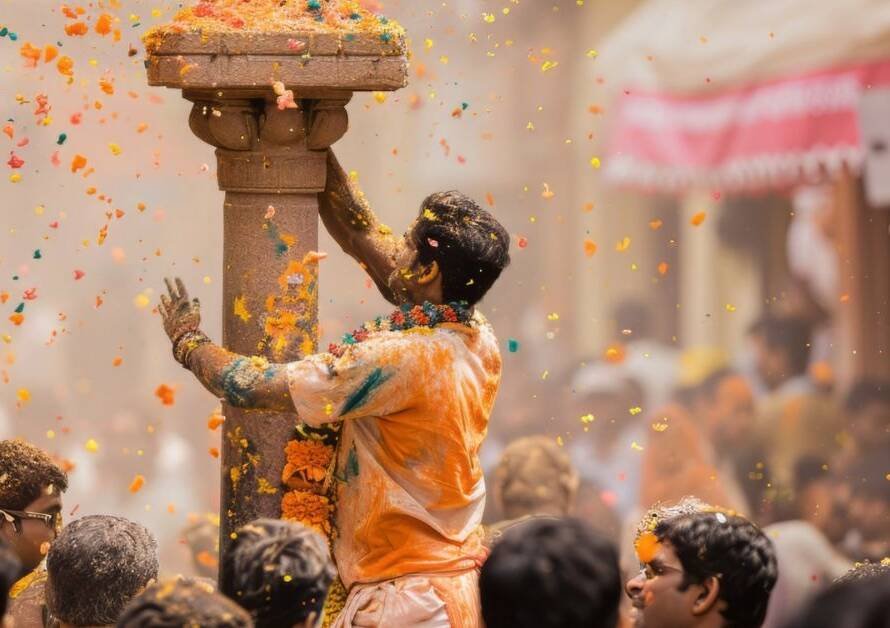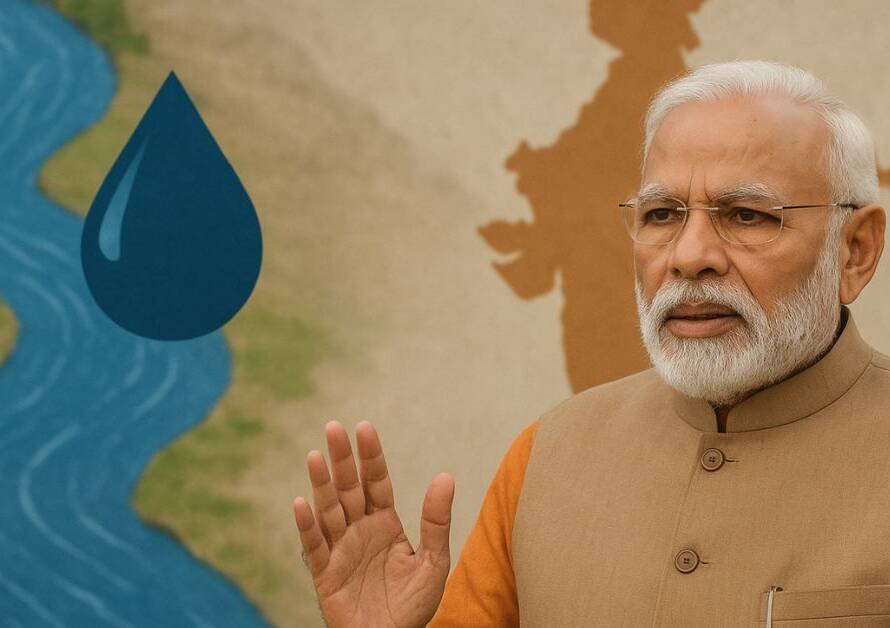For centuries, Bharat was misunderstood by the world. Colonial propaganda, leftist historians, and Western intellectuals deliberately painted India as a land of mysticism, poverty, snake charmers, and superstition. This distorted image carried forward well into independent India, especially during the Congress era.
- Despite being the oldest living civilization with unmatched contributions to mathematics, science, spirituality, and governance, Bharat was forced to project itself as a third-world, aid-dependent country.
- Its civilizational strength, Sanatana Dharma, was suppressed on global platforms in the name of “secularism.”
- Instead of projecting Bharat’s heritage with pride, leaders often sought validation from the West by copying their models and avoiding Sanatani roots.
- But in 2014, history took a dramatic turn. The rise of Narendra Modi marked the beginning of a new civilizational era.
- Bharat, once seen as weak and chaotic, emerged as confident, decisive, and proud of its Sanatana heritage.
- The global perception of India transformed from a struggling third-world nation into a rising Vishwaguru — the world’s teacher.
1. The Image Shift — From Snake Charmers to Sanatana Dharma
Pre-2014:
- Bharat was mocked as the land of snake charmers, elephants, poverty, and superstition.
- Yoga, Ayurveda, and meditation were treated as exotic practices without recognition of their Sanatani origin.
- India’s global identity was limited to Bollywood and curry.
Post-2014:
- The United Nations declared International Yoga Day in 2015, supported by a record 177 nations. Today, yoga studios and Vedic practices are part of mainstream life in the West.
- Ayurveda, meditation, vegetarianism, chanting of mantras, and Gita-based wisdom are embraced by millions globally.
- From superstition to science — Sanatana Dharma is now respected as one of the most profound, sustainable, and holistic ways of life.
2. Foreign Policy — Appeasement vs. Assertiveness
Congress Era (Pre-2014):
- Nehru surrendered Kashmir to the UN and failed miserably against China in 1962.
- Indira won 1971 militarily but failed to permanently resolve Pakistan.
- Terror attacks like Parliament (2001) and 26/11 (2008) saw no retaliation.
- India was seen as a soft state unable to defend itself.
Modi Era (Post-2014):
- Modi introduced multi-alignment diplomacy — strong ties with US, Russia, Israel, Japan, and Middle East simultaneously.
- Terror is now answered: Surgical Strikes (2016), Balakot Airstrikes (2019).
- Strong resistance to China in Galwan (2020) proved Bharat’s steel.
- India leads Quad, SCO, BRICS, G20 — now a global agenda setter, not a silent follower.
3. Economy — Scam Bharat vs. Startup Bharat
Pre-2014:
Congress era was plagued by 2G, CWG, Coal scams; investor confidence collapsed.
India was dependent on aid, seen as corrupt and unstable.
Post-2014:
- Bharat is now the 4th largest global economy.
- Initiatives like Digital India, Make in India, Startup India, Atmanirbhar Bharat created a new image of innovation.
- Global investors trust India more than China today.
- During COVID, Bharat’s Vaccine Maitri supplied vaccines to 100+ countries, proving India is not an aid-seeker but an aid-giver.
4. Security & Military Image
Pre-2014:
- India suffered terror attacks without strong response.
- The world saw Bharat as a helpless victim of Pakistan-sponsored terror.
Post-2014:
- India conducts surgical strikes and airstrikes to retaliate against terrorism.
- Defense exports have surged; indigenous manufacturing has strengthened.
- India is now a recognized military power in the Indo-Pacific.
5. Media & Western Leaders’ Tone
Pre-2014:
Western media like BBC, NYT, and The Economist mocked India as corrupt and poor.
Leaders in US/EU saw India as a market but not as a partner in power politics.
Post-2014:
- Time Magazine that once criticized Modi now praises India’s global diplomacy.
- Obama (2015): “India has already emerged.”
- Trump (2019, Howdy Modi): “India has a true friend in the White House.”
- Macron (2023): Called Modi “the most respected leader of the Global South.”
- Putin: “Modi is a true patriot. India is lucky to have him.”
- Gulf nations build Hindu temples, acknowledging Bharat’s civilizational respect.
6. Civilizational Pride & Soft Power
Pre-2014:
- Bharat’s civilizational roots suppressed in the name of secularism.
- Leaders avoided references to Sanatana Dharma on global platforms.
Post-2014:
- Modi proudly promotes Sanatana values globally.
- Temples rise abroad; Sanskrit chants echo at global events.
- Bharat reclaims its status as the mother of civilizations.
- Diaspora empowered as ambassadors of Indian culture.
7. Global Respect — From Dependent to Decisive
Pre-2014:
- India respected, but not admired or feared. Dependent on aid and IMF.
- Always called a “developing country with potential.”
Post-2014:
- Nations admire Bharat as a visionary, reliable, and decisive power.
- It is the voice of Global South, a bridge between West and East.
- Bharat is not just growing—it is leading.
📖 Bharat as Vishwaguru
The transformation of Bharat from 1947 to 2014 was a story of wasted potential, weak leadership, and mocked identity. But the story of 2014–2024 is one of resurgence, strength, and civilizational pride.
- The world once mocked Bharat as the land of snake charmers, but now it celebrates it as the land of Sanatana Dharma.
- From being aid-dependent → Bharat is now an aid-giver.
- From being a silent follower → Bharat is now a global leader.
- From being ashamed of its roots → Bharat proudly projects Yoga, Ayurveda, Gita, and Sanatana Dharma as universal gifts to humanity.
Bharat has risen. And this time, it will not stop.
🇮🇳 Jai Bharat, Vandematram 🇮🇳
For old Blogs please visit our website www.saveindia108.in
To join our whatsapp Community please click
https://chat.whatsapp.com/FMr2WNIgrUVG9xK78FW5Dl?mode=r_t
To join our Telegram group please Click https://t.me/+T2nsHyG7NA83Yzdl Old Blogs are available on the telegram group also.

